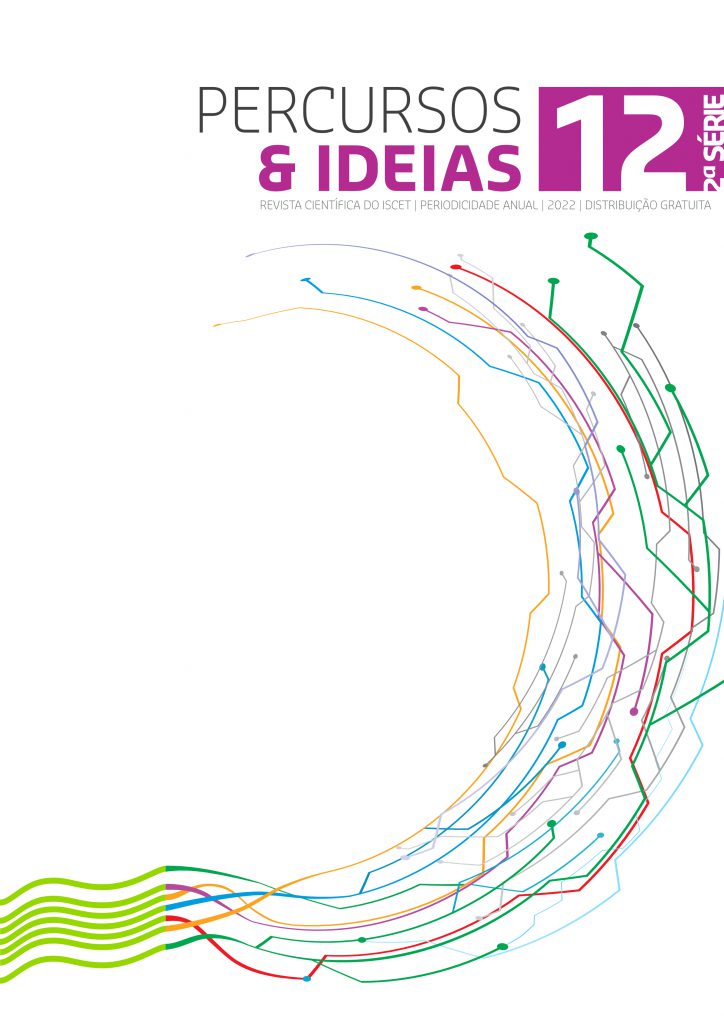Rota Turística do Jogo do Pau em Cabeceiras de Basto: Breve Introdução à Representação Social desta Maestria na Literatura Portuguesa
Lídia Aguiar 
 1 and Rita Ribeiro
1 and Rita Ribeiro  1
1
1 ISCET – High Institute of Business and Tourism Sciences, Porto, Portugal
![]() Download citation. To cite this text:
Download citation. To cite this text:
Aguiar, L. & Ribeiro, R. (2022). Rota Turística do Jogo do Pau em Cabeceiras de Basto: Breve Introdução à Representação Social desta Maestria na Literatura Portuguesa, Percursos & Ideias, 12, 69-77.
doi:10.56123/percursos.2022.n12.69
Published 12 October 2022. Language: Portuguese.
Section: Tourism.
Abstract
The Jogo do Pau (in English, “The Stick Game”) is a martial art developed mainly in rural areas, where the stick was a weapon of easy access and firearms were scarce. Until the middle of the 20th century, in the north of Portugal, a rural society prevailed. It needed to defend itself, be it from wild animals or serious altercations over issues such as water, land, women or any other reason. It was amidst this social context that the Jogo do Pau came into being, with its crude and virile technique. With the opening up of rural society to urbanisation and the subsequent emigration of its people, this art form made its way into the cities and adapted itself accordingly. In this article, we aim to present a brief journey through portuguese literature. Methodologically we chose to quote three works, and, in this way, create a route to transport the reader to Cabeceiras de Basto – a municipality which has applied for the recognition of Jogo do Pau as an Intangible Cultural Heritage of Portugal. A bibliographical review and the fieldwork carried out by the authors within the scope of the study to be submitted in the aforementioned application, have been used.
Keywords
Jogo do Pau; Portuguese literature; Social representations; Cabeceiras de Basto Route.
References
AGUIAR, L. (2015), Routes de la contrabande dans les régions frontalières Galice-Portugal (Melgaço): la musealisation de la mémoire et des traditios, Tese de Doutoramento, Girona, Universidade de Girona.
BESSA Luís, A. (1995), A Sibila, Guimarães, Guimarães Editores.
CAÇADOR, A. N. (1963), Jogo do Pau: Esgrima Nacional, Lisboa, Tipografia Almeida.
CASTELO BRANCO, C. (1999), “Como ela o amava!”, cit em Noites de Lamego, Lisboa, Publicações Europa América.
CMCB – CÂMARA MUNICIPAL DE CABECEIRAS DE BASTO (s/d), Casa do Tempo, [Consult. a 12/10/2021.]. Disponível em: https://cabeceirasdebasto.pt/equipamentos-publicos-casa-do-tempo.
DGPC – DIREÇÃO GERAL DO PATRIMÓNIO CULTURAL (s/d), [Consult. a 05/10/2021]. Disponível em: http://www.patrimoniocultural.gov.pt/pt/.
FERNANDES, I. M. (2013), Cabeceiras de Basto: História e Património, Cabeceiras de Basto, Câmara Municipal de Cabeceiras de Basto.
FERREIRA, L.; AGUIAR, L.; PINTO, J. (2012), “Turismo Cultural, Itinerários Turísticos e impactos nos destinos”, in Cultur: Revista de Cultura e Turismo, ano 06, n.º 02, pp. 109-126.
FIGUEIRA, L. M. (2013), Manual para a elaboração de Roteiros de Turismo Cultural, Tomar, Instituto Politécnico de Tomar.
HOPFER, F. (1924), Duas palavras sobre o jogo do pau, Lisboa, J. Rodrigues & Cª.
LOPES, P. (2020), O Jogo do Pau Português – A arte marcial portuguesa, uma tradição com séculos de prática, Porto, Editora 5 Livros.
RUSSO, N. (1980), “O Jogo do Pau”, in Intervenção – Revista de animação sócio-cultural, janeiro/fevereiro (14), pp. 23-27.
TORGA, M. (1943), O Senhor Ventura, Coimbra, Atlântica.


